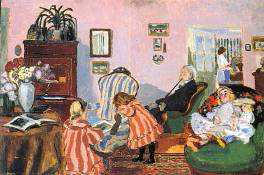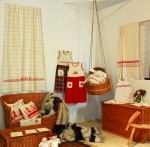The Age of Pieter Brugel is the name of an exhibition in the Museum of Fine Arts in Budapest which has been on display since June 15th. It will close up on September 16th, so if you would like to check out the exhibition, you better hurry up to get tickets and check it out. The goal of the exhibition is to display paintings by Pieter Brugel from the 16th century.
The Age of Pieter Bruegel
Museum of Fine Arts
June 15th – September 16th
Official press release (source: Museum of Fine Arts)
At a time of stormy historical events in the sixteenth-century the Netherlands underwent vast changes in its intellectual life and the arts. This century saw a deepening of the divide between medieval and modern cultures with Italian Humanism and Renaissance playing a major role in the formation of the new, humanistic system of values.
Up to now the Museum of Fine Arts has not stage an exhibition solely devoted to sixteenth-century Netherlandish drawings, since only a smaller part of these works was displayed in 1932 and 1967 in shows spanning two or more centuries. In the past decades European museums also failed to mount exhibitions providing a comprehensive picture of the great changes that took place in Netherlandish drawing between 1500 and 1600.
The Budapest collection of drawings – similarly to other collections – does not have extensive enough material to present the art of all the prominent Netherlandish masters; therefore, for the sake of completeness, we will borrow some important sheets by Jan Gossaert, Pieter Brueghel, Roelandt Savery, Bartholomeus Spranger, Lodewijk Toeput and Frederick Sustris from the Albertina in Vienna. However, our collection is famous for some specialists, which significantly increases its importance. Among these, the rich and diverse landscape depictions deserve primary mention, since the museum is able to boast of complete series by Pieter Stevens, Paulus van Vianen, Frederick van Valckenborch, “the master of the Budapest sketchbook” and Anton Mirou. We also own landscape drawings of outstanding quality by Hans Bol, Jacques Savery, Jan Brueghel and Abraham Bloemart. We owe the invitation extended to our museum by the Louvre in 2008 to exhibit our sixteenth-century drawings mainly to our collection of landscape drawings which contains treasured rarities. Then only 80 of our drawings were showcased, while the upcoming exhibition will include another 40 sheets. The added works as well as the explanations and inspirational prefigurations for each drawing will illustrate the process of change with convincing power.
The exhibition to run from June will showcase rare figural sheets by masters from whom only a few drawings are known worldwide. Among such special works are the “Trionfi” (triumphal procession) series by Michiel Coxcie, a study sheet by Cornelis Engebrechtsz from a sketchbook, Frans Floris’ early, allegorical and mythological drawings and Egidius Sadeler’s red chalk study of the Roman Palatine Hill. The thematic and technical diversity of the drawings are rendered palpable by the outstanding figural works by the most important masters: Bernaert van Orley, Maarten van Heemskerck, Denys Calvaert, Pieter Candid, Frederick Sustris, Karel van Mander, Hendrick Goltzius and Jacques de Gheyn.




